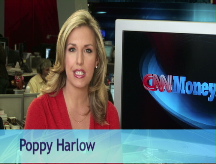Trying to end the mortgage-rate lag
A slew of dour economic reports make safe Treasury bonds the asset of choice for conservative investors, but lowering home lending rates is another matter.
NEW YORK (CNNMoney.com) -- Bad news is good news for Treasury investors, and recently, there has been a whole lot of bad news. Mortgage rates, however, have not fallen with Treasury yields, but an $800 billion government bailout could change all of that.
Treasurys continue to rise and yields are falling back near their historic lows set last week as each day brings weaker and weaker economic indicators.
Wednesday, reports showed durable goods orders in a large decline, initial jobless claims remained in the mid-500,000 range, consumer spending declined by the most in seven years and sales of new homes fell to an 18-year low.
With all the weak data coming in, investors are placing bets that government-backed bond prices will continue to rise - even with the stock market in a three-day rally.
But the good news for bond investors has been bad news for home borrowers recently. While 30-year fixed mortgage rates usually move up or down in step with the yield on the 10-year Treasury yield, the gap between the two has recently widened to about 3 percentage points from the 2-point spread it has been in throughout the credit crunch. Traditionally, the difference has been in a range of about 1 to 1-1/2 percentage points.
According to Freddie Mac, 30-year fixed-rate mortgages are averaging about 6%, even though the yield on the 10-year bond is hovering around its historic low of just under 3%.
That's because lenders of all types have increased borrowing costs during the credit crisis. Though government intervention in the credit markets has helped interbank lending rates to fall, the Federal Reserve and Treasury had not done much to ease holders of consumer debt.
Then, Tuesday, the government unveiled an$800 billion bailout for holders of assets backed by credit card debt, auto loans and mortgages. Some $500 billion of that is devoted to purchases of mortgage-backed securities and another $100 billion will pay down debt from mortgage finance companies Fannie Mae and Freddie Mac.
With the Fed buying such a large amount of mortgage assets directly, the hope is that this will narrow the gap between Treasury yields and mortgage rates.
Bonds: The benchmark 10-year note rose 35/32 to 106-17/32, and its yield fell to 2.99% from late Tuesday's 3.10%. This is the first time the yield on this note has gone below 3% in its 46-year history. (Full story)
The 30-year bond rose 1-31/32 to 117-28/32, and its yield fell to 3.52% from 3.62%. Before last week, the yield on the 30-year bond had only once before fallen below 4% and that was at the height of the credit crisis in October.
The 2-year note rose 4/32 to 100 8/32, and it yielded 1.13%, down from 1.18%.
Meanwhile, the yield on the 3-month bill fell to 0.06% from 0.12%. The yield on the 3-month Treasury bill is closely watched as an immediate reading on investor confidence, with a lower yield indicating less optimism.
Bonds have fared much better than stocks this year. The Lehman Brothers Aggregate U.S. Treasury index has returned a whopping 9.3% to investors so far since January, compared to a loss of 41.6% for S&P 500 stocks. In November alone, Treasurys returned 4.6% to investors, while S&P 500 investors lost 11.5%.
Lending rates: Lending rates were mixed Wednesday. The 3-month Libor rate fell to 2.18% from 2.20%, according to Dow Jones. The overnight Libor rose to 0.99% from 0.93%, according to Bloomberg.
Libor, the London Interbank Offered Rate, is a daily average of interbank lending rates and a key barometer of liquidity in the credit market. More than $350 trillion in assets are tied to Libor.
But even as lending rates edged higher, two gauges of banks' confidence in the credit market were a mixed bag.
The Libor-OIS spread held even at 1.78 percentage points. The spread measures the difference between actual borrowing costs and the expected targeted borrowing rate from the Fed. It is used as a gauge to determine how much cash is available for lending between banks. The bigger the spread, the less cash is available for lending.
Another indicator, the TED spread, fell to 2.08 percentage points from 2.09 points. The TED spread measures the difference between the 3-month Libor and the 3-month Treasury bill, and is a key indicator of risk. The lower the spread, the more willing investors are to take risks. ![]()





